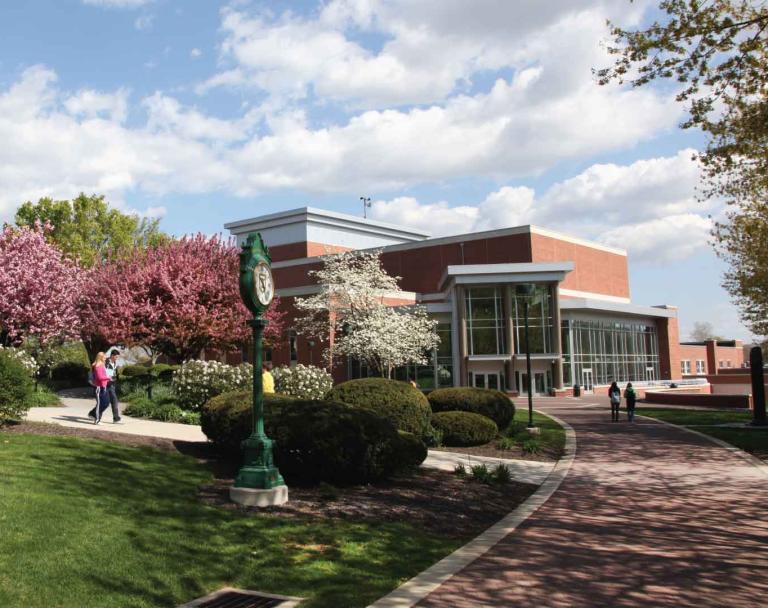Race and Space

Race and Space at YCP Examines the History of York College
Students in the Introduction to Museum Studies course took a deep dive into the land and location of York College of Pennsylvania, as well as the historical racial demographics of its students.
Logan Morral ’22 is well-versed in a variety of research projects. As a Nuclear Medicine Technology student at York College of Pennsylvania, Morral bases most of his research on facts or objective matters. But, when he signed up for Introduction to Museum Studies, he had to stretch his opinion of what makes for good research.
“I’ve always loved museums, so I was drawn to the class in many ways,” Morral says. “Studying history is often taking into account what we know and acknowledging that there are things we don’t know. I had to step outside of my boundaries of what it means to draw conclusions.”
Morral’s class dedicated itself to studying Race and Space at YCP, a deep dive into the land and location of York College, as well as the historical racial demographics of its students. The research was broken into four groups: land use, the York Collegiate Institute, the York Junior College, and the four-year College at its current location—all while paying close attention to racial dynamics across that history.
“Some of the conversations can be difficult and not everyone wants to have them, but they’re so important for us to move forward as a society,” Morral says. “I got to be part of a group that unboxed that, and that’s a great feeling.”
Understanding the people
While a lot of the research involved where the College was located, from its original home in downtown York to where it’s now located on Country Club Road, it was also important that students kept the people who were impacted by the College in mind.
The land where the College now sits was once home to the Susquehannock, a tribe of Native Americans who were largely killed because of disease transferred from white Europeans. Those who did survive are believed to have later died in massacres in Pennsylvania.
“That part of history can be tough to look at,” Morral says. “Knowing that history gives us a better understanding of how to do better as a society.”
The property was later a golf course owned by the Outdoor Club before York Junior College purchased it in 1975 for $250,000. Information about that move and many other moments in the College’s history were shared with students by Karen Rice-Young, who runs the Archives and Special Collections at Schmidt Library.
Cecily Widmann ’21, an International Relations major, was interested in the fact that the College never segregated during the Civil Rights movement, so there was no evidence of a Jim Crow era, she says. However, she struggled to find students of color in many photographs until the 1950s or 1960s.
“The political environment is a tough subject, but we didn’t camouflage anything,” Widmann says. “We know that by understanding our past, we can move forward. We can see how location, cost, or other factors may have made it more challenging for a wider range of students to attend. The question is today, how do we do better?”
Displaying the history
While the class project was rooted in research, it wouldn’t be a museum course if it didn’t put the information on display for others to learn from, Widmann says.
The class created visual presentations of their research that were hung on bulletin boards outside of the History Department near the campus Starbucks, where many students and faculty gather or walk past. There is also a digital presentation of the work, where students can share their findings in an accessible way for many to observe.
“I think it’s important that students have a wide understanding of many subjects, even if their majors don’t fit into that box,” Morral says. “Being able to share this information not only gave us a chance to present what we learned, but it hopefully helps others have a better understanding of our history as well.”

